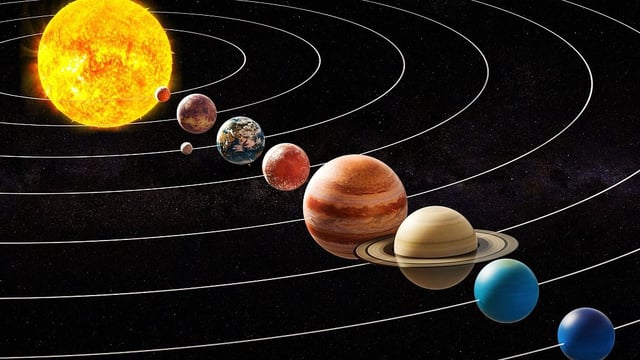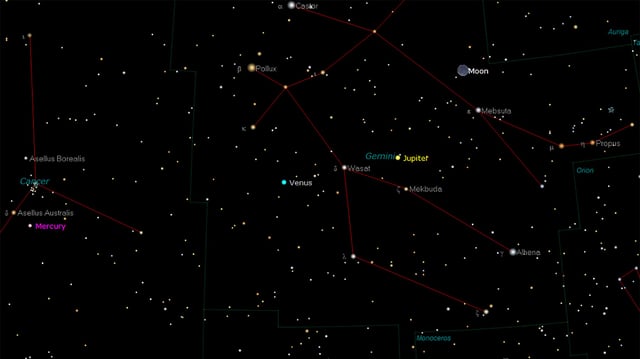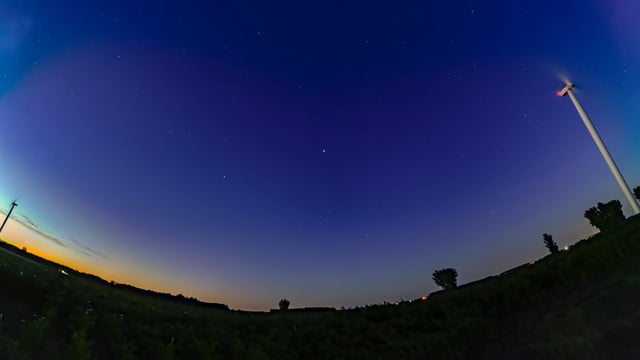Overview
- The viewing window runs roughly Aug. 17–21, with Tuesday, Aug. 19 marking Mercury’s greatest elongation and Wednesday featuring a closer crescent-moon pairing with Venus.
- Look 45–60 minutes before sunrise toward a clear low eastern horizon to spot Mercury low, Venus and Jupiter higher in the east, and Saturn farther south.
- Venus, Jupiter, Saturn and Mercury are visible to the naked eye, while Uranus and Neptune require binoculars or a small telescope.
- The apparent lineup is an effect of the planets following the ecliptic plane, so they only seem aligned from Earth despite being widely separated in space.
- A thin crescent moon will show earthshine for striking photos on Aug. 19–20, and the sequence fades after Aug. 21 as Mercury slips back into the Sun’s glare.



